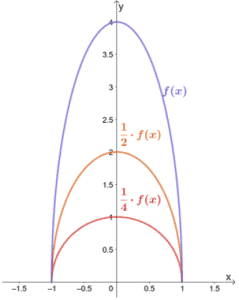

Why don’t we observe how f(x) is transformed when we multiply the output values by a factor of 3 and 6? The graph below shows the graph of f(x) and its transformations. When a function is vertically stretched, we expect its graph’s y values to be farther from the x-axis.

This results in the graph being pulled outward but retaining the input values (or x). Vertical stretch occurs when a base graph is multiplied by a certain factor that is greater than 1. We’ll now discuss the third transformation technique: vertical stretching.
Vertical compression exampes free#

Vertical stretch on a graph will pull the original graph outward by a given scale factor. Vertical Stretch – Properties, Graph, & ExamplesĮver noticed graphs that look alike, but one is more vertically stretched than the other? This is all thanks to the transformation technique we call vertical stretch.


 0 kommentar(er)
0 kommentar(er)
